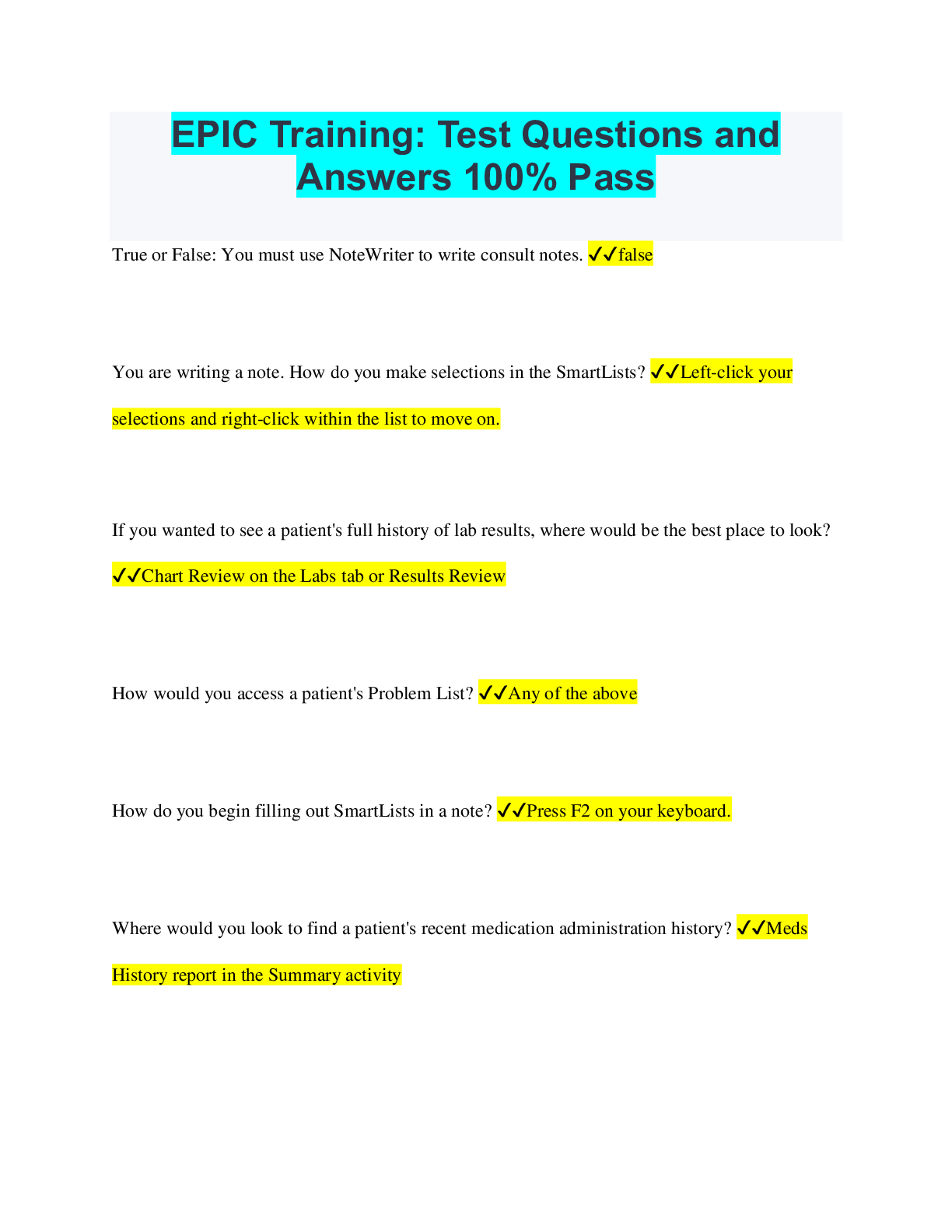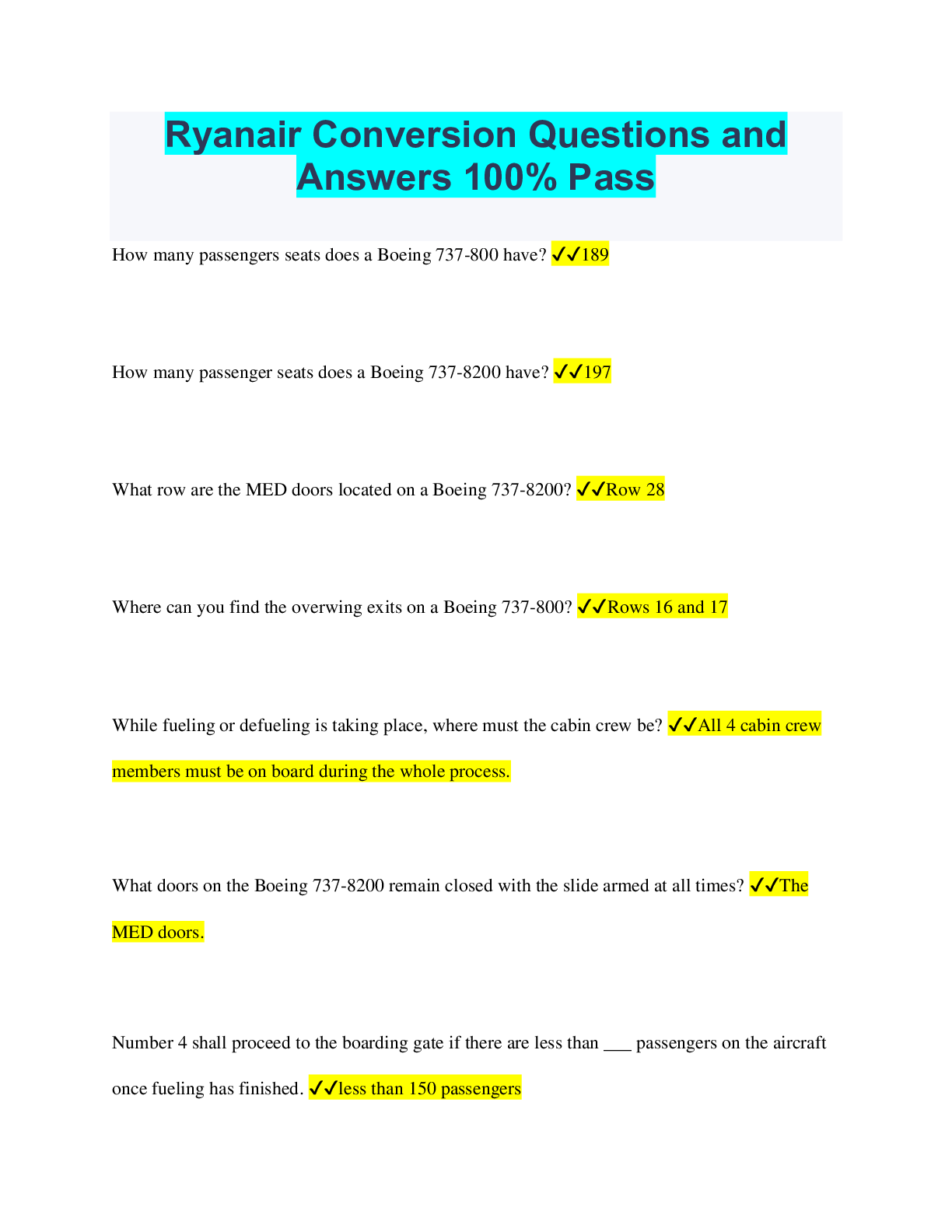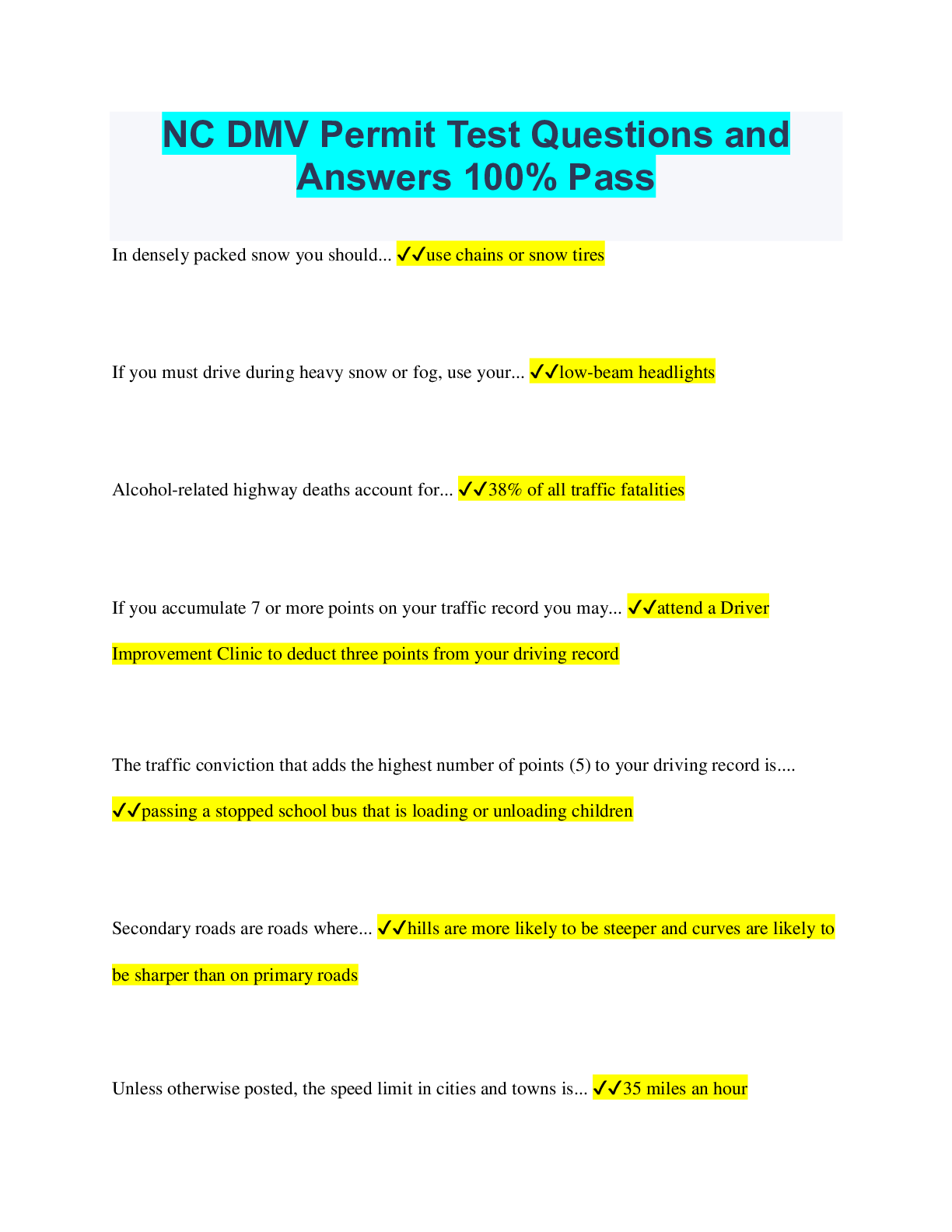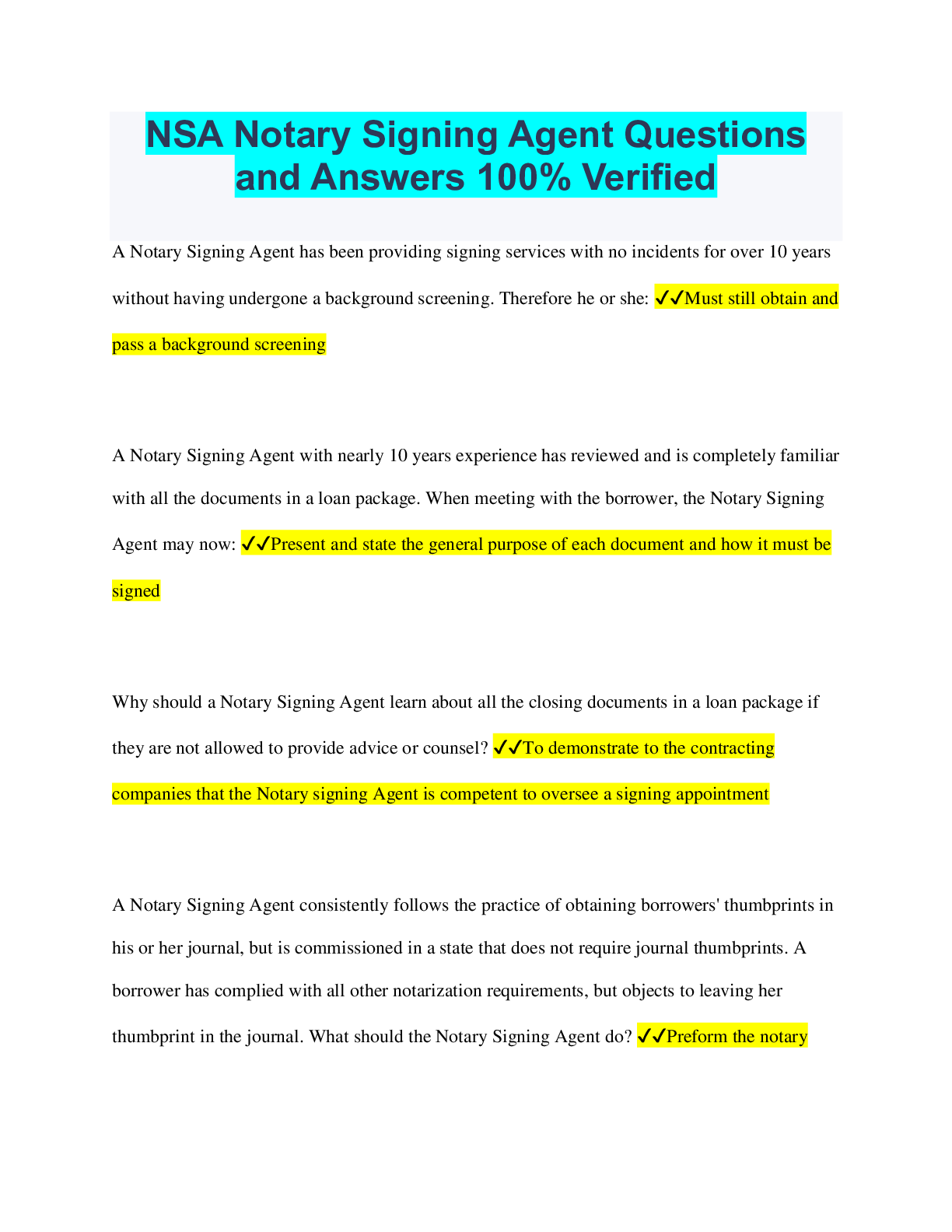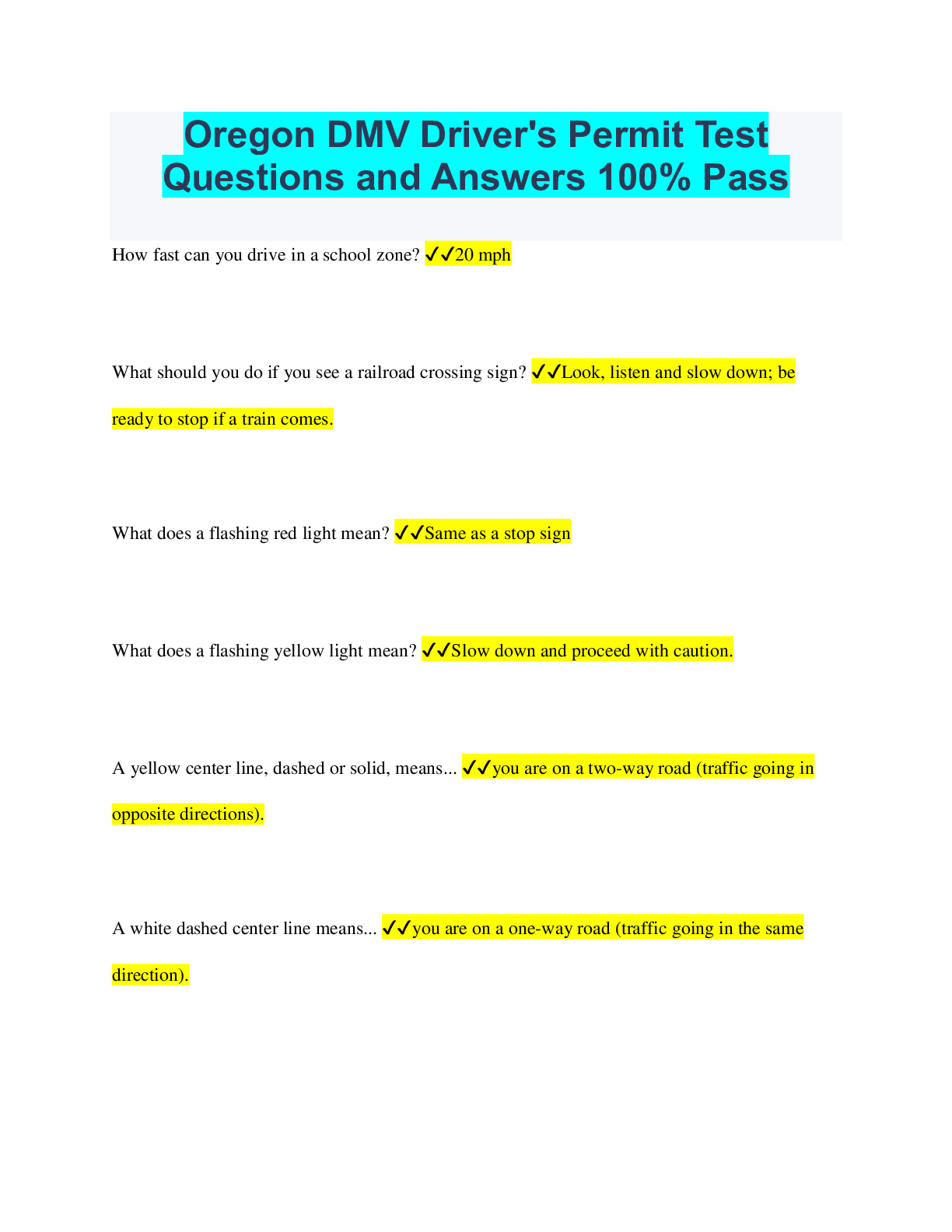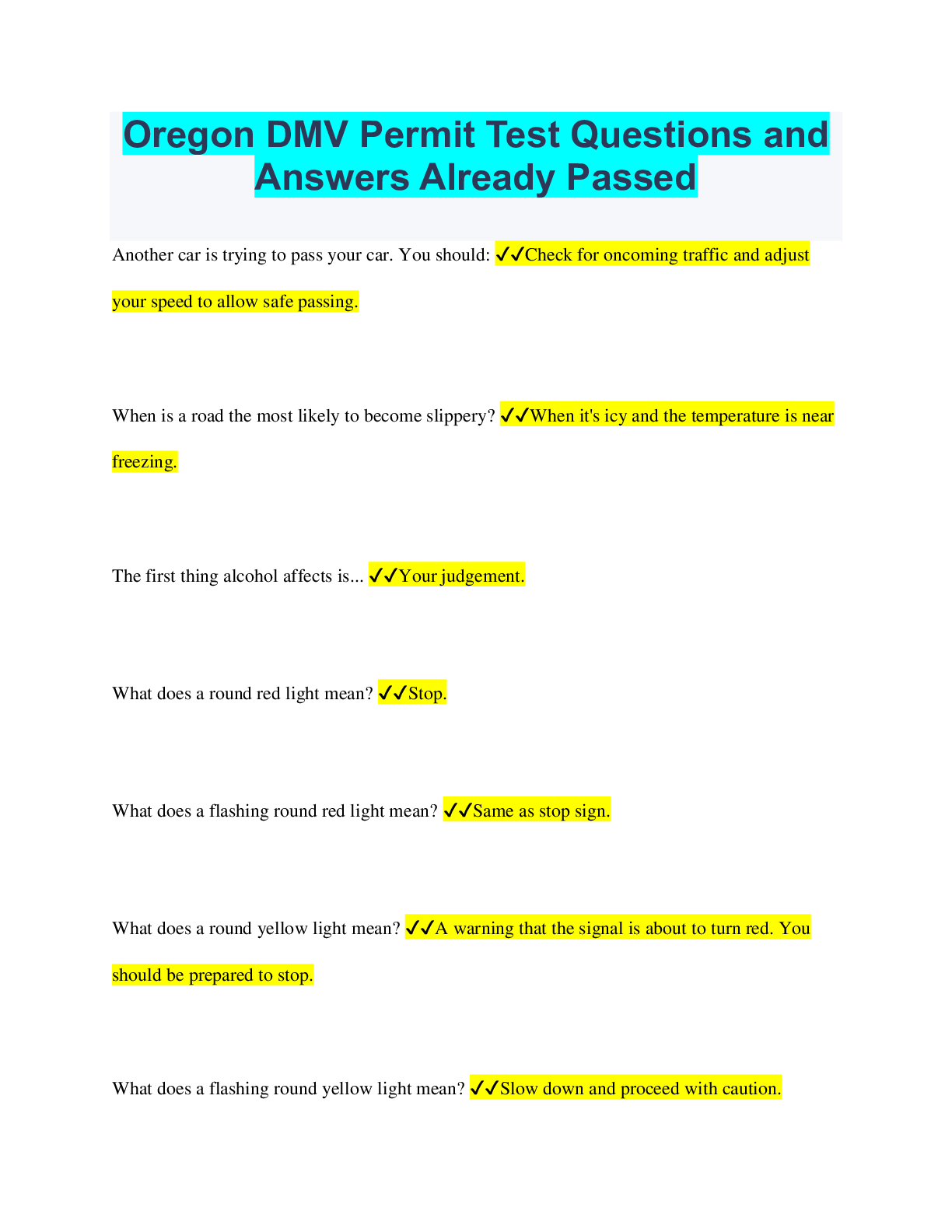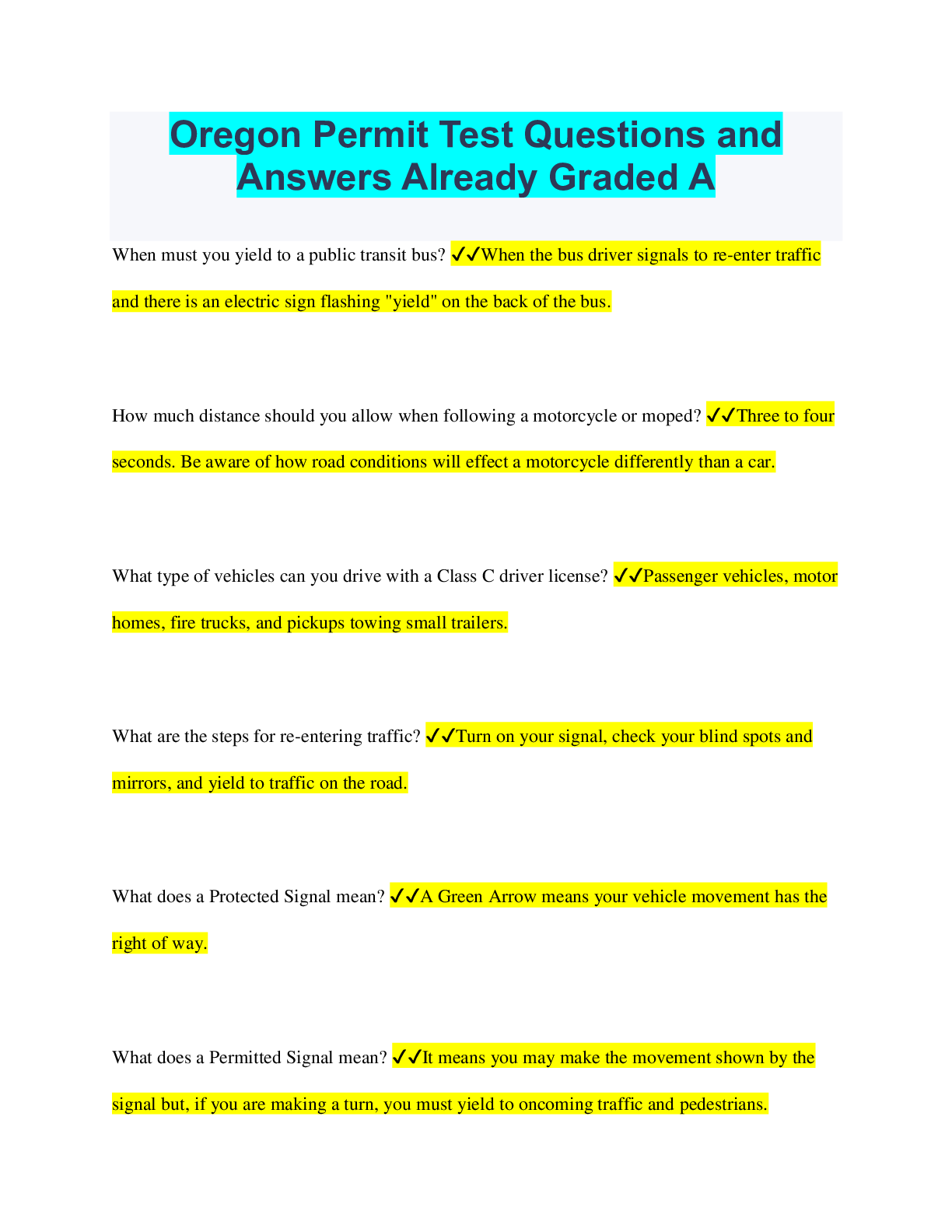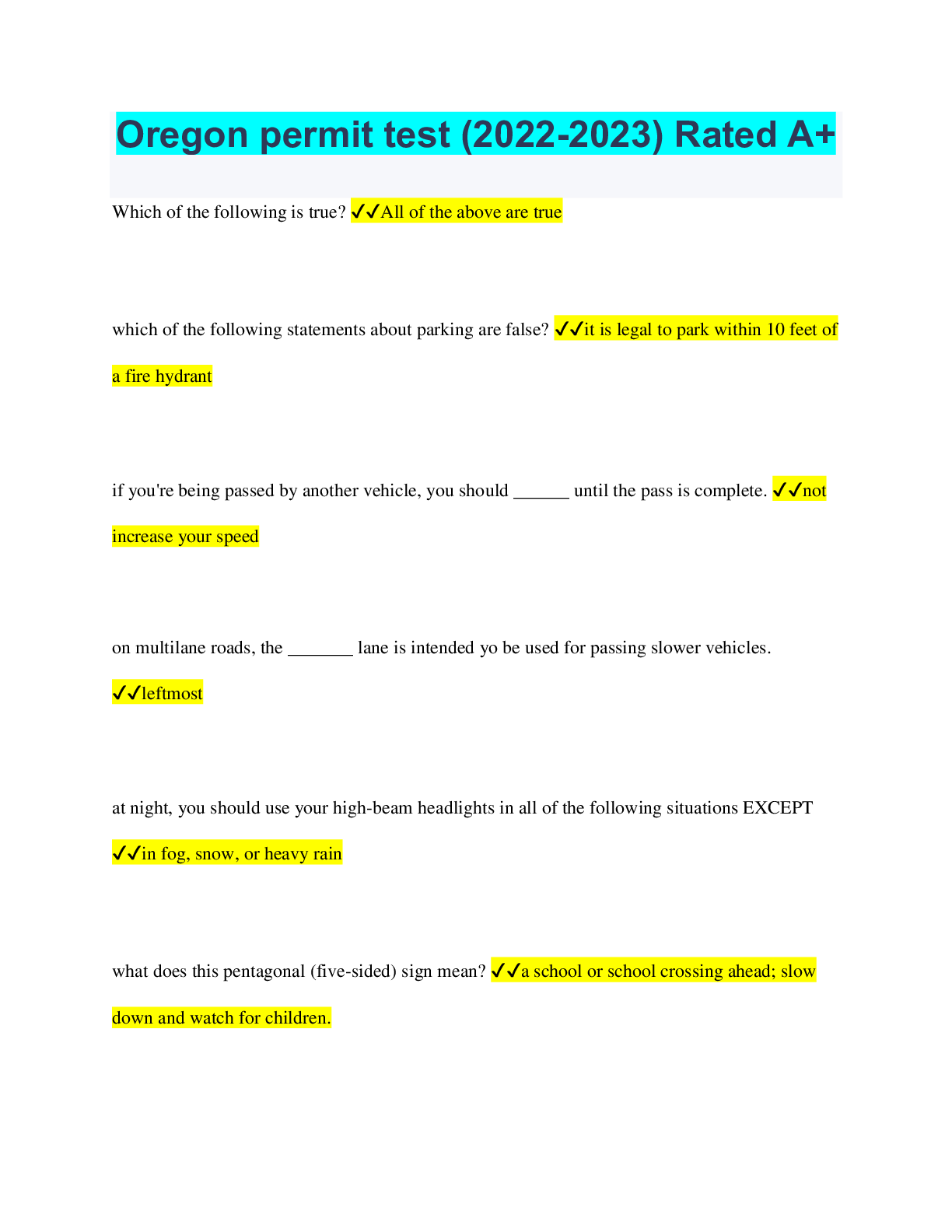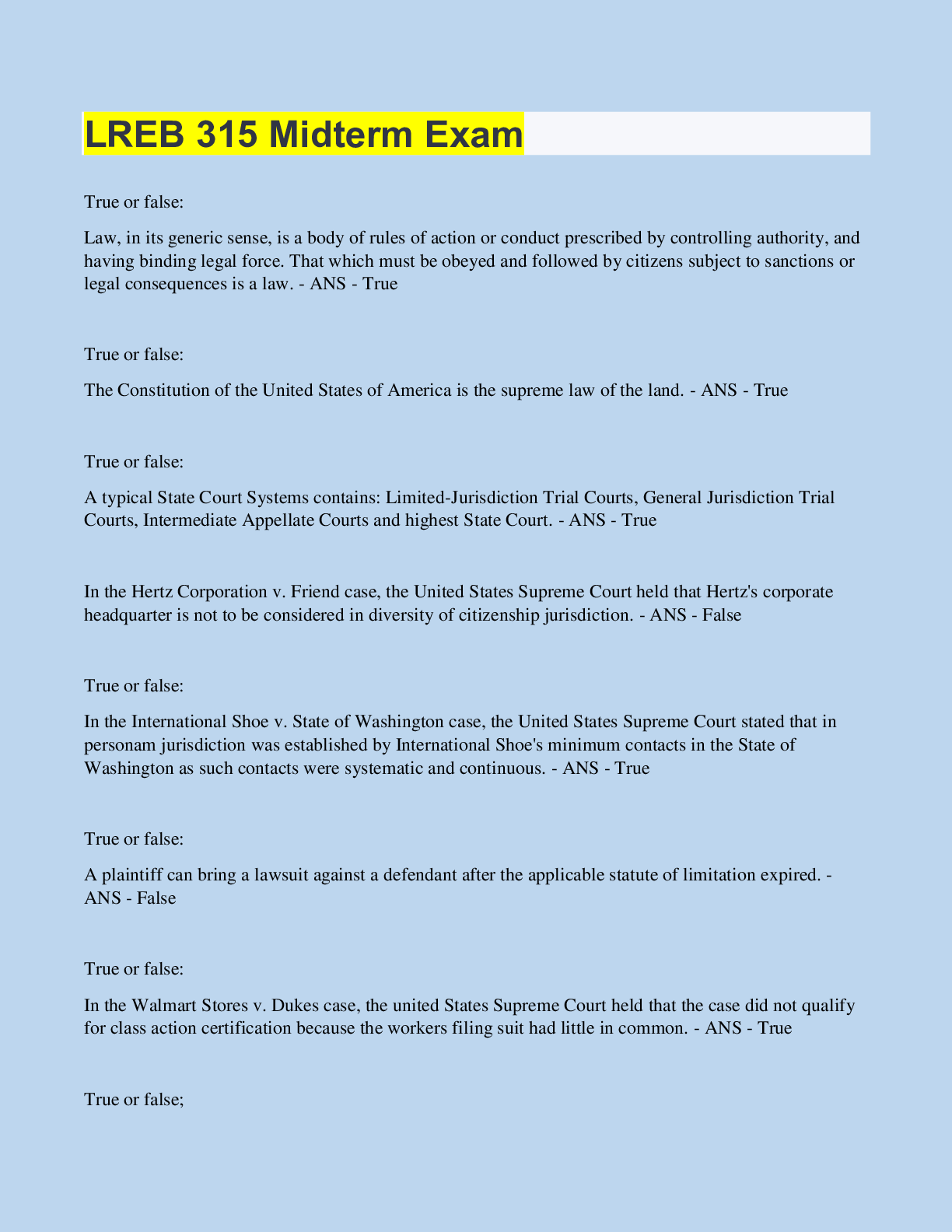Surgery > QUESTIONS & ANSWERS > Certified Medical-Surgical Registered Nurse Sample Questions (All)
Certified Medical-Surgical Registered Nurse Sample Questions
Document Content and Description Below
Certified Medical-Surgical Registered Nurse Sample Questions Christine Warren, 45 years old, has a long history of ulcerative colitis, and non-surgical treatment no longer relieved her symptoms. Sh... e underwent a total proctocolectomy and a permanent ileostomy 12 hours ago. The nurse should contact the physician immediately if Mrs. Warren has which of these findings? 1) The stoma appears pale and dry. 2) The stoma appears red and shiny. 3) There is 200 mL of dark green output from the stoma. 4) There is 50 mL of serosanguinous drainage from the stoma. - ANS - 1) The stoma appears pale and dry. Rationale: If there is an adequate blood supply to the stoma, the color is pink or red, and the stoma is moist as a result of mucous production. A pale dry color suggests ischemia of the stoma or bowel and must be reported immediately to the physician. With an ileostomy initially after surgery, the output is a loose, dark green liquid that may contain some blood. The ileostomy usually begins to drain within 24 of surgery at more than one liter per day. When changing Mrs. Warren's ileostomy bag, the nurse notices that the peristomal skin is irritated. Which of these actions by the nurse would be appropriate before reapplying the appliance? 1) Wash the area with antiseptic soap and water. 2) Clean the site with Dakin's solution. 3) Use a solid skin barrier. 4) Obtain an order for a topical antibiotic. - ANS - 3) Use a solid skin barrier. Rationale: The drainage from the stoma can quickly irritate the surrounding tissue. Therefore, a solid skin barrier, with a pectin base or karaya wafer that has a measurable thickness and hydrocolloid adhesive properties, should be applied. Which of these comments, if made by Mrs. Warren before her surgery, would indicate that she had concerns about her body image? 1) "I will have to stop my aerobics classes." 2) "I'm so afraid I may not survive the surgery." 3) "I need to go shopping for some loose, baggy clothes." 4) "I'm concerned that this may be only the first of many surgeries." - ANS - 3) "I need to go shopping for some loose, baggy clothes." Rationale:Body image refers to a person's perception of self and determines how the person interacts with others. One does not need to purchase special clothing after ileostomy surgery, although some minor adjustments may be needed for comfort, e.g., stretch underwear or pantyhose for support. Lewis Palmer, 45 years old, has a history of multiple myocardial infarctions and is a heavy smoker. He takes warfarin sodium (Coumadin) daily. Two weeks ago, he had a right femoralpopliteal bypass, which became occluded 24 hours ago. He is admitted following an angioplasty of the femoral-popliteal bypass graft. Mr. Palmer is receiving continuous IV heparin. Because Mr. Palmer is receiving heparin, it is essential for the nurse to 1) monitor his prothrombin time. 2) observe him for signs of pulmonary embolism. 3) limit his intake of foods high in vitamin K. 4) check the femoral puncture site at frequent intervals. - ANS - 4) check the femoral puncture site at frequent intervals. Rationale: Since bleeding is a common side effect of heparin, it is vital to check the operative site, the femoral puncture area, for signs of bleeding. Attempts to revascularize Mr. Palmer's leg are unsuccessful, and Mr. Palmer has a below-knee amputation (BKA) of his right extremity and is returned to the medical-surgical unit with an intravenous infusion in place. His orders include: heparin drip, morphine sulfate 10 mg IV push q4h prn for pain, and ampicillin sodium g 1 IV q6h. Twelve hours postoperatively, Mr. Palmer is found to be short of breath and diaphoretic. He says, "My chest hurts." His pulse is 140/min, compared to a baseline of 80/min. His blood pressure is105/60 mm Hg, compared to a baseline of 138/70 mm Hg. His respirations are 32/min, compared to a baseline of 16/min. His O2 saturation is 85%. The nurse immediately calls for help. Which of the following questions is most important for the nurse to ask? 1) "Have you ever had this type of chest pain before?" 2) "How long have you had this pain?" 3) "What pain medication do you usually take?" 4) "What were you doing before the pain began?" - ANS - 1) "Have you ever had this type of chest pain before?" Rationale: Because of the patient's symptoms and his history of myocardial infarctions, the nurse should find out if the patient has had this time of pain previously. The nurse receives all of the following stat orders for Mr. Palmer. Which one should the nurse question? 1) Oxygen per nasal cannula at 4 L per minute. 2) Enoxaparin (Lovenox) 40 mg subcutaneously. 3) Troponin level. 4) Computed tomography (CT) angiogram. - ANS - Rationale: The nurse should questions the order for Lovenox because the patient is receiving a heparin drip. Maggie Clark, a 42-year-old female, was admitted with newly diagnosed type 2 diabetes mellitus. Her blood glucose has been stabilized, and the nurse is preparing her for discharge. Her discharge orders will include metformin (Glucophage). Mrs. Clark is also being treated for hypertension. Because Mrs. Clark is to take Glucophage on a regular basis it is important to 1) monitor her glomerular filtration rate. 2) check her serum amylase routinely. 3) obtain her red blood cell count periodically. 4) examine her urine for casts. - ANS - 1) monitor her glomerular filtration rate. Rationale: The estimated glomerular filtration rate (eGFR) is one way to measure the adequacy of kidney function. Glucophage is excreted by the kidney and the risk of lactic acidosis increases in patients with impaired kidney function. The drug may be used if the eGFR is between 45 and 60 mL/min/1.73 m2, i.e., in mild chronic kidney disease. Glucophage is absolutely contraindicated if the eGFR is below 30 mL/min/1.73 m2. Mrs. Clark is prescribed metoprolol tartrate (Lopressor) for hypertension. Which symptom of hypoglycemia would be masked by Lopressor? 1) Diaphoresis. 2) Tingling. 3) Diplopia. 4) Tachycardia. - ANS - 4) Tachycardia. Rationale: A side effect of Lopressor, a beta blocker, is bradycardia. The Lopressor-induced bradycardia can mask tachycardia, a symptom of hypoglycemia. Charles Haverford is diagnosed [Show More]
Last updated: 2 years ago
Preview 1 out of 58 pages
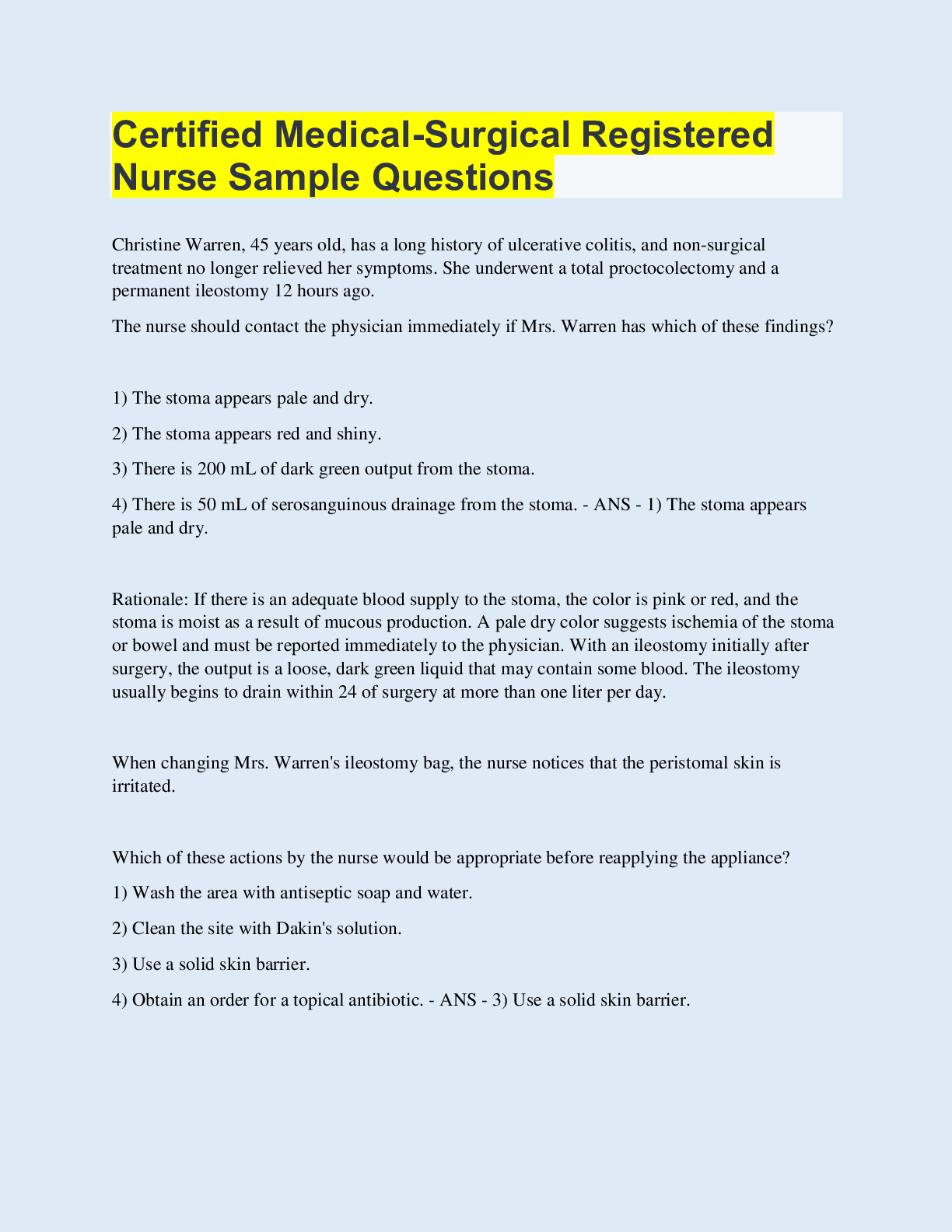
Buy this document to get the full access instantly
Instant Download Access after purchase
Buy NowInstant download
We Accept:

Reviews( 0 )
$10.50
Can't find what you want? Try our AI powered Search
Document information
Connected school, study & course
About the document
Uploaded On
Oct 11, 2022
Number of pages
58
Written in
Additional information
This document has been written for:
Uploaded
Oct 11, 2022
Downloads
0
Views
95

.png)


